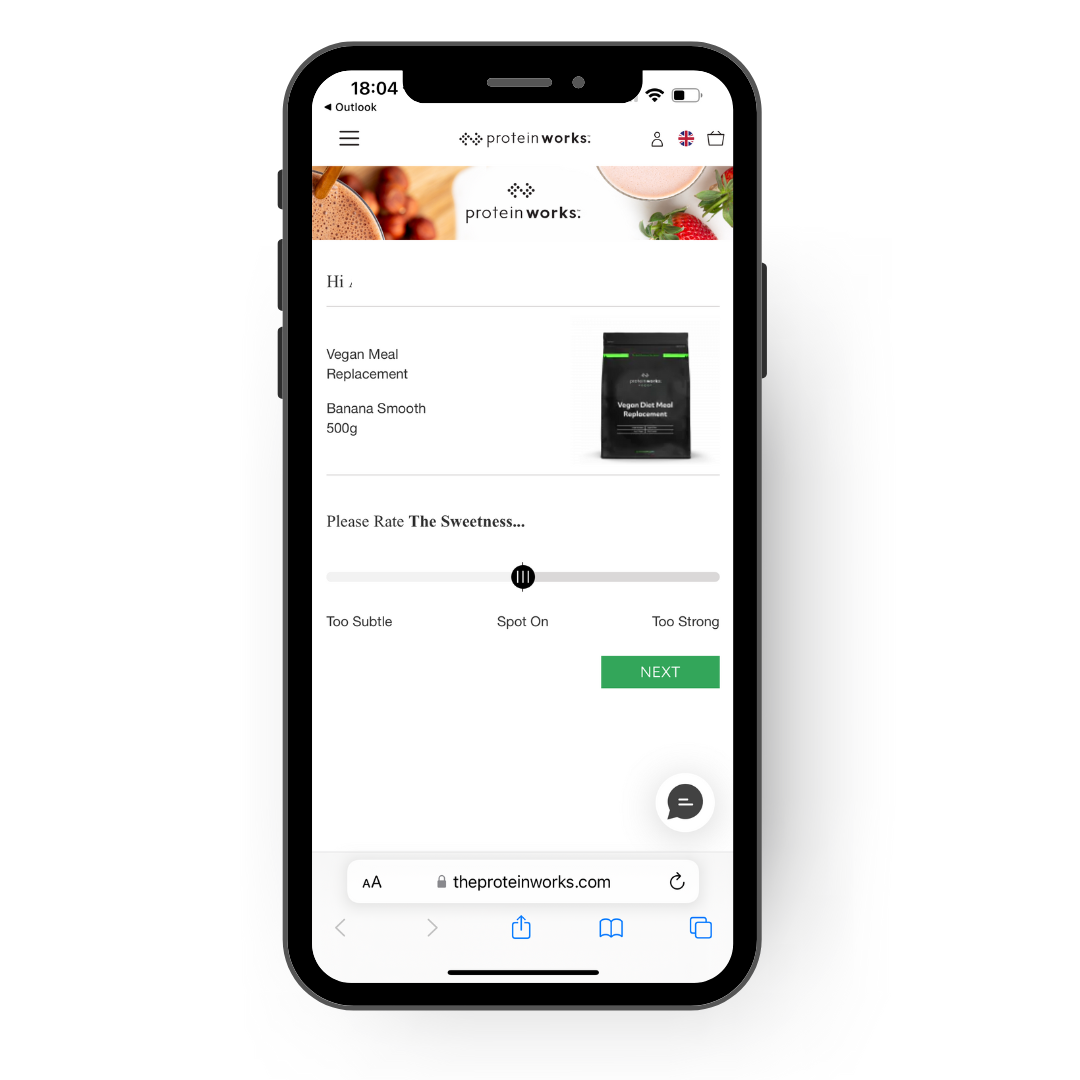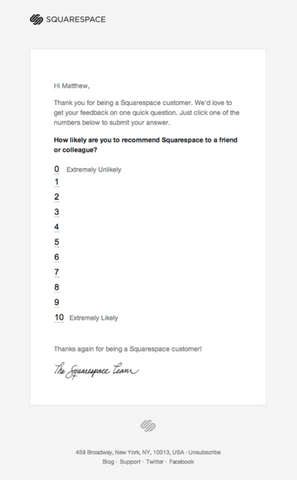How well do you know your customers?
Getting to know your audience is one of the most important parts of growing a business, and it can be as easy as sending a single email with a well-structured survey.
With the in-depth understanding that you gain from customer satisfaction surveys, you’ll be able to create better online shopping experiences for your customers and build more targeted marketing campaigns, creating a better customer journey.
When you’re finished with this guide, you’ll be able to craft an awesome survey that gets you actionable customer satisfaction and market research data.
What is a customer satisfaction survey?
A customer satisfaction survey (CSAT) is a tool businesses use to measure their customers’ satisfaction or to better understand customer opinions regarding products and services. These surveys result in measurable customer feedback that a business can use to then improve its product or service offering—or review its market positioning.
Customer satisfaction survey examples
Buffer
A product-market fit (PMF) survey also usually contains just one question. It reads along the lines of “How would you feel if you could no longer use X?”where X is your product or service.
Here’s an example of a PMF survey from Buffer:

The purpose of conducting a PMF survey is to help determine whether your product or service is right for the people you’re trying to target as customers (product-market fit). If lots of customers say they wouldn’t be disappointed at the loss of your product, then you don’t have a stable PMF.
On the other hand, if lots of customers would be disappointed with the loss of your product or service, then you’ve likely found a good PMF.
EDF
A customer effort score (CES) can help identify negative experiences and make them right. Here’s an example of a customer effort score survey in action from energy company EDF, using Whatsapp:

While we don’t know for sure what the other two questions of EDF’s customer experience survey were, this first question is a measurement of CES.
Protein Works
While some businesses will use a CSAT survey to measure overall business opinions using open-ended questions, you can also create multiple-choice questionnaires for specific product purchases.

In the above example, Protein Works uses a rating scale for multiple measurements of its protein supplement product (sweetness, lumpiness, the strength of flavor, and whether the customer would buy the product again).
Squarespace
Net Promoter Score (NPS) is the most popular metric businesses use to measure customer satisfaction. The reason is that it’s so simple. It’s usually only a single question, using a Likert scale, asking the customer how likely they are to recommend a business.
Here’s an example from Squarespace:

While it’s popular for businesses to use email, it’s also not uncommon to see SMS versions of the NPS survey (particularly in the telecom industry).
The purpose of the NPS survey is as simple as it gets: to gauge whether customers are happy enough to recommend a business to their network. If they’re not likely to recommend a business, the survey can be used as a learning opportunity to find out why.
Monzo
You can get some amazing ideas from customer feedback when you ask the right questions. For example, the digital bank Monzo has a community forum dedicated to feedback and feature ideas:

Any business can do this on a smaller scale with the help of a CSAT survey asking this question. When you ask, you have a better idea of what your customers want your product or service to look like in the future.
Customer satisfaction survey questions to ask
You might be wondering, what are other important questions you can ask in customer surveys?
Here are some of the top types of questions to ask:
- How would you rate your overall satisfaction with our product/service?
- How likely are you to recommend our product/service to a friend or colleague? (Net Promoter Score question)
- How easy was it to use or navigate our product/service? (Customer effort score question)
- What do you like most about our product/service?
- What do you think needs improvement in our product/service?
- How satisfied are you with the quality of our product/service?
- How satisfied are you with the value for money of our product/service?
- How responsive have we been to your questions or concerns about our product/service?
- How would you rate the knowledge and professionalism of our customer support team?
- How would you rate the timeliness and efficiency of your customer service representative?
- How well did our product/service meet your expectations?
- How likely are you to purchase from us again in the future?
- Were there any specific features or aspects of our product/service that stood out to you?
- Were there any challenges or difficulties you experienced while using our product/service?
- Is there anything we could have done to enhance your experience with our product/service?
- How would you rate the overall ease of the purchasing or sign-up process?
- How well did our product/service help you achieve your goals or solve your problem?
- Do you have any additional comments, suggestions, or feedback for us?
To provide some more detail on why you might want to conduct customer experience surveys, here are some of the benefits you’ll experience:
- Understand customers’ expectations. A satisfaction survey serves as a tool for your customers to give honest feedback about your business. So when you provide them with the opportunity, they’ll tell you what they feel about your business, which helps you understand customer needs better.
- Improve customer and client retention. Happy customers don’t always stay happy, so offering regular CSAT surveys can help you catch any looming issues before they become bigger problems. If you know what makes customers happy, you can improve customer retention and increase customer lifetime value (CLV) in your store.
- Make better products. You can compare respondents to see if there’s a trend among them—good and bad. If a particular product or feature is driving more satisfied customers, you can figure out what about it makes them happy, and apply that to future or existing products or services.
Types of customer satisfaction surveys
You might have thought there was only one type of customer or client satisfaction survey, but there are different kinds that help you understand various perspectives. This section will cover the four main types of surveys you can send to your customers.
Net Promoter Score (NPS)
The NPS survey focuses on a single question that measures the likelihood of customers recommending your product or service to others.
Respondents rate their willingness to recommend on a scale of 0–10. NPS is calculated by subtracting the percentage of detractors (0–6 scores) from the percentage of promoters (9–10 scores).
Customer satisfaction score (CSAT)
CSAT measures customer happiness or overall satisfaction with your products, services, and business interactions. In this survey, you ask participants to rate their satisfaction on a scale (e.g., 1–5 or 1–10).
Your CSAT score is calculated by dividing the number of satisfied customers by the total number of respondents. Then multiply it by 100.
Customer effort score (CES)
CES is a metric that helps measure how much effort the customer puts into interacting with your business, or how easy/difficult it was to solve an issue with your customer service team.
The respondents rate how much effort it takes to solve an issue or do a task (e.g., 1–5 or 1–7).
Post-purchase feedback surveys
Customers are sent these surveys shortly after making a purchase to get feedback about their shopping experience, product quality, and problems.
A customer feedback survey like this can include multiple questions, and may combine NPS, CSAT, and CES elements.
Milestone surveys
A milestone survey is a type of customer satisfaction survey conducted at specific points during a customer journey. For example, you may send it after onboarding to gauge customer sentiment.
Customers fill out these surveys about their experiences, satisfaction levels, and potential areas for improvement during key moments in their interactions with a product, service, or company.
Don’t want to create your own? Use this customer satisfaction survey template by SurveyMonkey to speed up the process.
Tips for creating customer satisfaction surveys
1. Keep it simple
Your questions need to be as simple as possible to ensure you’re getting results you can actually use. Be straightforward—if you’re looking for an opinion on a particular product or feature, ask about it specifically—and make sure you’re only asking one question at a time.
An overcomplicated social media or online survey can seem like way too much effort and discourage customers from participating, so keep it short and sweet.
2. Be goal-oriented
Every question should be asked with a purpose in mind. Think about the central challenge you’re trying to overcome with your survey and brainstorm questions that can help you get the customer satisfaction data you need to be successful.
There’s no room for fluff, so make sure that every question is actually useful to you. Remember: You need to show your customer base how much you value their time by not wasting it.
3. Ask closed and open-ended questions
Closed-ended questions with Yes/No, multiple choice, and scaled answers can be great for collecting demographic data, but your most fascinating customer insights will probably come from asking open-ended questions.
Think about it this way: Use closed-ended questions when you’re looking for a specific response and open-ended questions when you want general feedback or suggestions.
Give your loyal customers lots of opportunities to share how they really feel about your business and products. What they have to say may surprise you!
4. Use neutral language
Avoid using leading or loaded questions when you’re building your survey. These landmines can completely skew your results by unfairly influencing the way a participant responds. Try to keep your wording as neutral as possible and avoid any emotional language or value statements about your business, products, or customers.
You should also avoid making assumptions about your customers’ experiences. Don’t say things like, “We’ve recently made this tool better” or “We know our customers love our new features.” The less biased the questions, the more valuable the survey responses.
5. Use an app
With Shopify, you can install survey apps such as Hulk NPS Post Purchase Survey that help you set one up on your Shopify store with ease. That way, you can easily send out professional surveys that improve response rates. Pricing starts at $20 per month.

Invest in customer success. Build your survey today
Measuring customer satisfaction is a smart way to understand the customer lifecycle, as well as help identify customer loyalty and detractors.
Their insights can also help you inform your business on how to prevent churn by moving forward with relevant communication and product or service offerings. It can also help you provide great customer service and improve retention in your store.
While there are dedicated third-party survey tools available, you can easily install a Shopify app for your store. This way, you can see your response insights right on your Shopify dashboard and not have to go anywhere else for information.
by Michael Keenan
https://www.shopify.com/uk/blog/75022277-how-to-read-your-customers-minds-with-one-email













